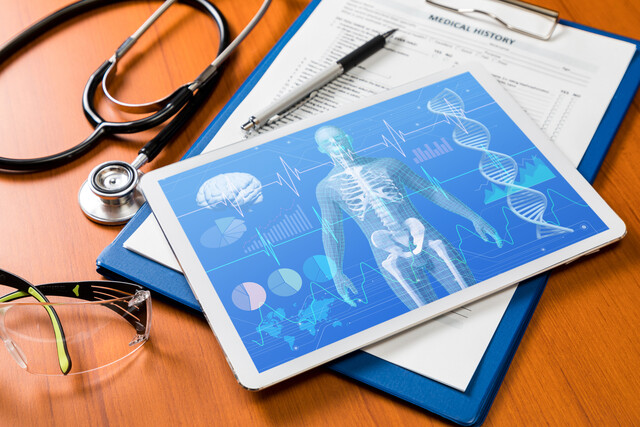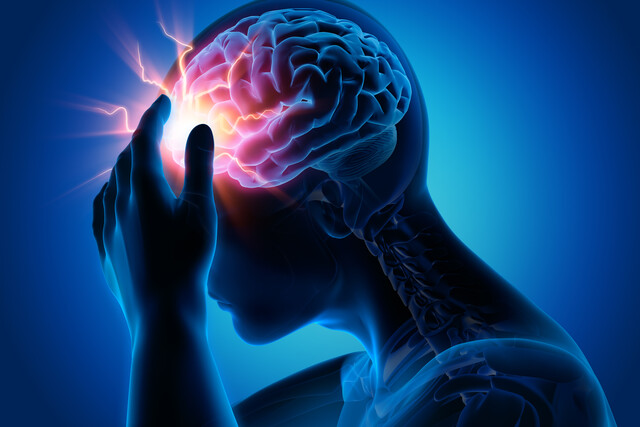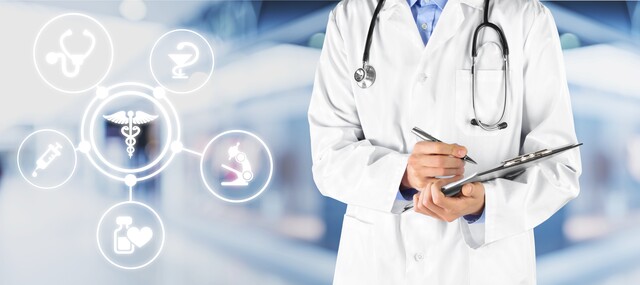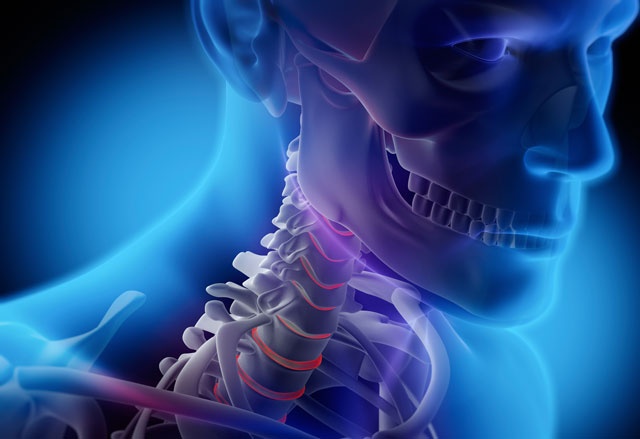Online Class: Comprehensive Medical Terminology 1 & 2

no certificate
with CEU Certificate*
-
22Lessons
-
42Exams &
Assignments -
5,924Students
have taken this course -
33Hours
average time -
3.3CEUs
Course Description
Medical Terminology Mastery: From Foundations to Fluency
The world of medicine is vast and intricate, making the language used within it equally complex. Given the critical nature of healthcare, even the slightest miscommunication can lead to significant consequences. With the global healthcare industry projected to grow at an unprecedented rate, the necessity for clear, concise medical communication has never been higher.
Enter the Medical Terminology Mastery Course, an all-encompassing journey through both foundational and advanced medical terminologies. This course seamlessly amalgamates the robust content of Medical Terminology 101 and 201, setting you on the path to achieve medical linguistic excellence.
Course Overview
Beginning with the foundational elements, the course delves deep into the roots of medical words, encapsulating the prefixes, suffixes, and word roots. With these building blocks in hand, the voyage continues through each body system. Here, we unravel the layers, ensuring you not only recognize but also define related medical terms with precision.
For instance, you won't just learn the term 'angina pectoris' but understand that 'angina' means pain and 'pectoris' refers to the chest - a chest pain typically due to reduced blood flow to the heart. Such in-depth explorations peppered throughout the course make it an invaluable asset for both novices and seasoned professionals.
Why This Course?
-
Depth & Breadth: The curriculum dives deep into each topic, with some modules extended over two lessons for a thorough understanding, like the Digestive System (Lesson 7 & 8) or the Musculoskeletal System (Lesson 10 & 11).
-
Relevance: With up-to-date content mirroring the latest advancements in medicine, you'll always be a step ahead.
-
Interactive Learning: Engage with diverse resources, from assignments and exams to netlinks, ensuring comprehensive understanding and retention.
-
Refresher or First-Timer: While newcomers will find this course a robust introduction, seasoned professionals will appreciate it as a comprehensive refresher.
Course Modules:
The course spans 22 meticulously curated lessons. While the initial modules lay the groundwork with medical basics and word roots, the subsequent lessons navigate the complexities of the human body. From understanding the body's orientation (Lesson 3) to diving into the nuances of the respiratory (Lesson 14 & 15), integumentary (Lesson 17), and genitourinary systems (Lesson 20), each module is crafted for holistic understanding.
The course culminates in a rigorous final exam (Lesson 22), ensuring you emerge not just with knowledge, but with the confidence to apply it.
Step into the World of Medical Excellence
Medicine is as much about knowledge as it is about communication. The ability to convey complex medical scenarios with clarity and precision can make the difference between accurate or misguided treatments.
Whether you're stepping into the vast arena of healthcare or looking to solidify your existing knowledge, the Medical Terminology Mastery Course is your ultimate companion. Come, embark on a journey of medical linguistic excellence and emerge fluent in the language of healthcare. Enroll today, and take a step closer to medical eloquence.
- Completely Online
- Self-Paced
- 6 Months to Complete
- 24/7 Availability
- Start Anytime
- PC & Mac Compatible
- Android & iOS Friendly
- Accredited CEUs

Course Lessons
Lesson 1. Basics of Medical Language and Body Systems
The complexity of human physiology can be dissected into eleven critical systems, aiding comprehension of both health and disease; the course also covers foundational medical terminology necessary for differentiating signs, symptoms, and creating accurate diagnoses. From the microscopic level of cells to system-wide functions, medical practice involves ongoing analysis and familiarity with specific terms for optimal patient care outcomes.Lesson 2. Roots, Prefixes, Suffixes
Exploring the anatomy of medical words, this lesson unravels how prefixes, roots, and suffixes form the foundation of medical vocabulary. Through this understanding, learners gain the ability to craft and comprehend terms with ease and accuracy.Lesson 3. Exploring Human Body Orientation: Anatomy and Physiology Unveiled
Anatomy explores bodily structures while physiology examines their functions, forming the crux of this lesson's focus. Students will understand various positional terms and body planes essential for accurate anatomical reference.Lesson 4. Understanding Cell, Tissue, and Disease Interactions
Studying the human body requires an interplay between understanding cellular structures in cytology, tissue formation in histology, and disease influences in pathology. These fields, alongside comprehension of disease transmission methods, form the cornerstone of medical specialties.Lesson 5. Understanding Cardiovascular Health: From Diagnostics to Interventions
Discover the cardiovascular system's complexities through learning major organ forms, pinpointing frequent pathologies, and identifying requisite diagnostic tests. Enhanced comprehension is achieved by exploring treatments like cardioversion and bypass grafting techniques.Lesson 6. Anatomy and Function of Cardiovascular Components
Innovative diagnostic procedures, such as angiography and echocardiograms, enhance understanding and detection of cardiovascular function and pathology. Treatments like angioplasty, coronary artery bypass grafts, and implanted devices address blockages and dysrhythmias to maintain cardiac health.Lesson 7. Functional Insights into the Digestive System: From Pathologies to Treatments
The content presents a detailed overview of the digestive system, explaining how combining forms are used to identify organs, and detailing diseases such as colonic polyposis and hepatitis. You will learn about diagnosing procedures such as the Hemoccult test and treatment options like ileostomy.Lesson 8. Navigating the Path: Medical Terms of the Digestive System
The digestive system is a continuous tract from the mouth to the anus, including accessory organs that facilitate digestion and waste elimination. Disorders and treatments within this system often involve complex medical terms constructed from specific word parts.Lesson 9. Lymphatic System Overview
The lymphatic system's core structures can be recognized through combining forms like lymph/o and lymphaden/o, aiding in the understanding of diseases such as AIDS and lymphoma. Learn about diagnostic tests such as lymphangiography and treatments like chemotherapy that target these specific conditions.Lesson 10. Musculoskeletal Dynamics: From Structure to Treatment
This lesson outlines the structure and function of the musculoskeletal system, highlighting major organs and their associated terms. It provides insights into common pathologies, diagnostic methods, and treatments related to the system, including joint movement and muscle dynamics.Lesson 11. Musculoskeletal Structures and Functions
The skeletal framework coupled with its muscular associations plays a crucial role in maintaining bodily movements, and proper identification of parts can aid in diagnosing related disorders. Structural landmarks and specialized connective tissues like tendons and ligaments exemplify the system's versatility and vulnerability to various injuries and diseases, which often require professional care.Lesson 12. The Intricacies of Nervous System Pathologies and Their Diagnostics
Students will learn key terms related to the nervous system, such as cerebell/o for cerebellum, and understand how these relate to diseases like meningitis and multiple sclerosis. Diagnostic tools like CT and MRI scans are highlighted to help in the identification and evaluation of neurological conditions.Lesson 13. The Continuation of Nervous System Studies
Highlighting brain functions and protective structures, this lesson explains how diseases like Parkinson's and stroke impair cognition and physical ability. Diagnostic tools like MRI and EEG are vital in mapping and responding to neurological disturbances.Lesson 14. Breathing Essentials: Key Structures and Functions
This lesson dissects the respiratory system's critical components and delves into medical terminology using combining forms. It further outlines various pulmonary pathologies, diagnostic techniques, and treatment strategies for seamless understanding and application.Lesson 15. Understanding Lungs and Airways: The Anatomy and Physiology of Breathing
Understanding the role of the respiratory system involves tracing the passage of air through organs like the pharynx, larynx, and bronchi until it reaches the alveoli. Identifying disorders such as bronchitis or pneumonia and diagnostic tests like spirometry aids in effective disease management and treatment.Lesson 16. Key Concepts in Skin and Sense Organs
This lesson teaches the identification of major organ structures using combining forms and introduces key pathological conditions affecting the skin and sense organs. Additionally, it covers basic diagnostic tests and treatments for each body system, enhancing understanding of medical processes.Lesson 17. Exploring the Integumentary System: Functions, Structures, and Common Disorders
Focusing on the complex anatomy of the integumentary system, this lesson unpacks the layers and functions of the skin, alongside related structures like glands and hair. It also highlights common disorders, diagnostic practices, and medical terminologies, offering comprehensive vocabulary building from prior lessons.Lesson 18. Exploring the Complexities of Male and Female Reproductive Systems
Reproductive system pathologies such as vaginitis and varicocele are clearly explained, alongside their combinatory terminology and respective diagnostic methods. Treatment options are broadened with explanations on procedures like tubal ligation and TURP.Lesson 19. Exploring Hormonal and Renal Functions
This lesson explores the intricacies of the endocrine and urinary systems by teaching the identification of major organ structures and their associated combining forms. It covers pathologies, diagnostics, and treatments to ensure a comprehensive understanding of these essential bodily systems.Lesson 20. Structure and Function of Urinary and Reproductive Systems
Underpinned by key organs such as kidneys and bladders, the urinary system eliminates metabolic waste and regulates fluids, whereas the reproductive system facilitates gamete production and hormonal support. Diagnosis and therapeutic strategies for disorders in these systems, from infections to cancers, use technology ranging from imaging to minimally invasive surgeries, ensuring comprehensive care through specialists like urologists and gynecologists.Lesson 21. Tools of the Trade: Understanding Medical Instruments
The examination process is a symphony of techniques like auscultation and percussion, aimed at capturing the underlying health dynamics of a patient. Advanced instruments are discussed to facilitate precise measurement and observation of bodily functions.Lesson 22. Final Steps: Preparing for Your Exam
Approach your final exam with confidence by reviewing all previous lessons to ensure mastery of the material. When prepared, tackle the exam and aim for success!
Learning Outcomes
- Define and explain the basic medical terms related to vital signs, including the normal ranges and variations in temperature, pulse, and respiration.
- Recognize and classify the eleven body systems and describe the major components and functions of each system.
- Define and categorize medical terms by identifying their word roots, prefixes, and suffixes
- Demonstrate the ability to construct and spell medical terms using appropriate word parts, ensuring the correct use of prefixes and suffixes
- Define anatomy and physiology by accurately describing the differences between bodily structure and bodily function.
- Identify bodily directions and positions using appropriate anatomical terminology, such as anterior, posterior, proximal, and distal.
- Identify the roles and specialties of various medical specialists.
- Recognize and define key cytology, histology, and pathology terms related to cells, tissues, and diseases.
- Identify and describe common pathological conditions affecting the cardiovascular system.
- Recognize and define the combining forms associated with major structures of the cardiovascular system.
- Describe the structural differences and functions of the heart chambers and valves, specifying their role in blood flow.
- Identify and classify the three types of blood vessels, explaining their roles in circulatory pathways.
- Recognize major organ structures of the digestive system by identifying associated combining forms
- Demonstrate mastery of lesson content at levels of 70% or higher.
Additional Course Information

- Document Your Lifelong Learning Achievements
- Earn an Official Certificate Documenting Course Hours and CEUs
- Verify Your Certificate with a Unique Serial Number Online
- View and Share Your Certificate Online or Download/Print as PDF
- Display Your Certificate on Your Resume and Promote Your Achievements Using Social Media

Choose Your Subscription Plan
No Certificate / No CEUs
This course only
| Includes certificate | X |
| Includes CEUs | X |
| Self-paced |

|
| Instructor support |

|
| Time to complete | 6 months |
| No. of courses | 1 course |
Certificate & CEUs
This course only
| Includes certificate |

|
| Includes CEUs |

|
| Self-paced |

|
| Instructor support |

|
| Time to complete | 6 months |
| No. of courses | 1 course |
Certificates & CEUs
Includes all 600+ courses
| Includes certificate |

|
| Includes CEUs |

|
| Self-paced |

|
| Instructor support |

|
| Time to complete | 12 Months |
| No. of courses | 600+ |
Certificates & CEUs
Includes all 600+ courses
| Includes certificate |

|
| Includes CEUs |

|
| Self-paced |

|
| Instructor support |

|
| Time to complete | 24 Months |
| No. of courses | 600+ |
Student Testimonials
- "I believe the course was very well laid out. The break down of the information really helped me connect the concepts back together to each other." -- Amaryah C.
- "This course was great. It was super easy to manage my schedule with and was very helpful. It communicated the information clear and felt like I learned a lot from this course." -- Janell C.
- "I thought this course is extraordinarily helpful, especially the explanations included with the terminology and the videos were extremely helpful. I listened to all the videos and read them also as they played...I enjoyed it very much and as a medical transcriptionist, it was very helpful. I am looking forward to the certificate and may take anatomy and physiology next. The instructor was very fast in getting the assignments and exam marks back to me. I appreciate that." -- Kenna M.
- "I am so glad I found this site. There is so much information to be learned at a reasonable price. I have already recommended this site to friends and family. The course I just took will help me to continue on to my goal of medical billing and coding certification. The instructor of this course was fast and efficient with grading exams and papers." -- Michelle S.
- "Wonderful course! Information was well presented and comprehensive. Assignments were meaningful and facilitated learning. Exams were fair and feedback was helpful." -- Kayla S.
- "This course was really helpful, especially the videos because I am a visual person. In addition, the sequence of information was in logical order which made it easy to understand. Overall, I would definitely recommend this course. Thank you so much!" -- Sherrie R.
- "I feel this was extremely informative. I was glad to be able to learn from it and would definitely recommend this course." -- Katherine W.
- "The instructor was very professional and responsive in all my emails." -- Gregoria jessa D.
- "Love the course and the self-paced lessons, great information. Thank you so much! :)" -- Andrea M.
- "I just want to tell the instructor thank you for all your help during this course." -- Kimberly B.
Related Courses
-
 74 hours
7.4 CEUs
Medical Billing and Coding Course Bundle
+ More Info
74 hours
7.4 CEUs
Medical Billing and Coding Course Bundle
+ More Info
-
 95 hours
9.5 CEUs
Math All-In-One (Arithmetic, Algebra, and Geometry Review)
+ More Info
95 hours
9.5 CEUs
Math All-In-One (Arithmetic, Algebra, and Geometry Review)
+ More Info
-
 20 hours
2.0 CEUs
CPT Coding for Beginners
+ More Info
20 hours
2.0 CEUs
CPT Coding for Beginners
+ More Info
-
 17 hours
1.7 CEUs
Medical Terminology 201
+ More Info
17 hours
1.7 CEUs
Medical Terminology 201
+ More Info
-
 14 hours
1.4 CEUs
Medical Terminology for Medical Coders
+ More Info
14 hours
1.4 CEUs
Medical Terminology for Medical Coders
+ More Info
-
 17 hours
1.7 CEUs
ICD-10: Medical Coding
+ More Info
17 hours
1.7 CEUs
ICD-10: Medical Coding
+ More Info
-
 14 hours
1.4 CEUs
Biology 360: From Molecules to Ecosystems
+ More Info
14 hours
1.4 CEUs
Biology 360: From Molecules to Ecosystems
+ More Info
-
 7 hours
0.7 CEUs
Understanding Concussions
+ More Info
7 hours
0.7 CEUs
Understanding Concussions
+ More Info
-
 8 hours
0.8 CEUs
Medical Office Management
+ More Info
8 hours
0.8 CEUs
Medical Office Management
+ More Info
-
 6 hours
0.6 CEUs
How to Can, Freeze, Dry and Preserve Food
+ More Info
6 hours
0.6 CEUs
How to Can, Freeze, Dry and Preserve Food
+ More Info
-
 5 hours
0.5 CEUs
Emotional Intelligence
+ More Info
5 hours
0.5 CEUs
Emotional Intelligence
+ More Info
-
 20 hours
2.0 CEUs
Introduction to Medical Coding
+ More Info
20 hours
2.0 CEUs
Introduction to Medical Coding
+ More Info
-
 6 hours
0.6 CEUs
HIPAA Compliance 101
+ More Info
6 hours
0.6 CEUs
HIPAA Compliance 101
+ More Info
-
 5 hours
0.5 CEUs
Effective Presentations
+ More Info
5 hours
0.5 CEUs
Effective Presentations
+ More Info
-
 17 hours
1.7 CEUs
Introduction to Medical Billing
+ More Info
17 hours
1.7 CEUs
Introduction to Medical Billing
+ More Info
-
 12 hours
1.2 CEUs
Advertising, Marketing and Sales Writing
+ More Info
12 hours
1.2 CEUs
Advertising, Marketing and Sales Writing
+ More Info






